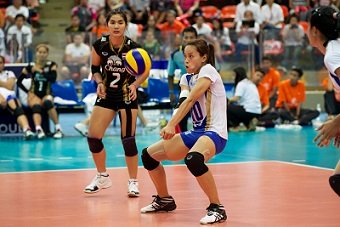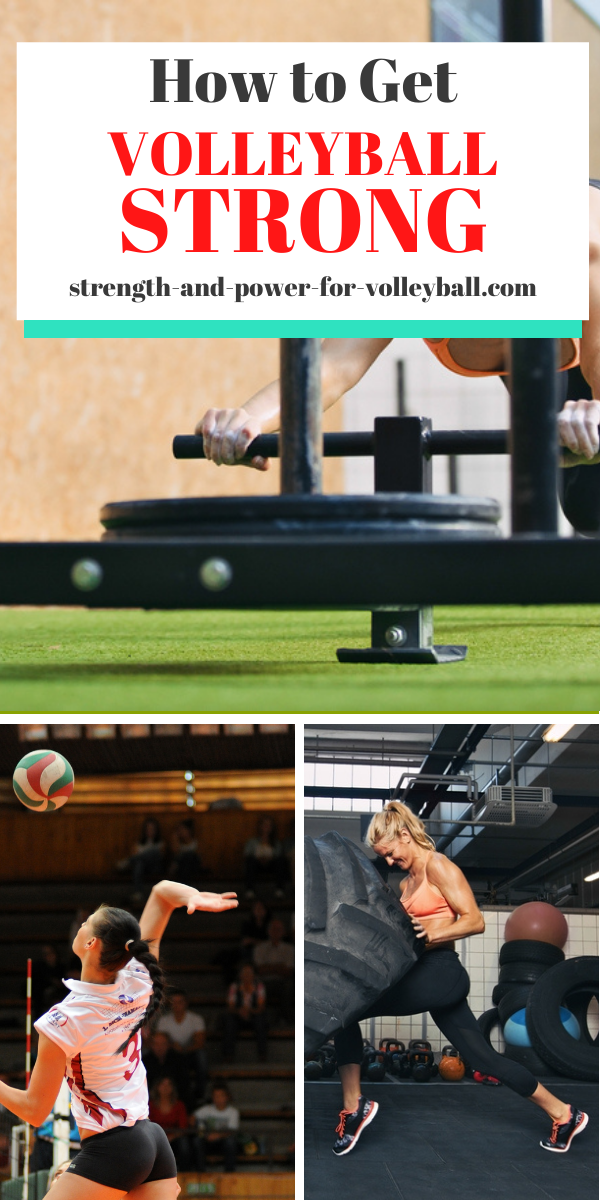Volleyball Jump Training Tips
A Quickness Strength
Evaluation
How to Train for Volleyball
Identify your quickness strength deficiencies and use the volleyball jump training tips.
The Relationship Between Quickness and Strength
It's important to consider the following questions...
1) How strong are you relative to your bodyweight?
2) How well does your nervous system interact with your muscular system (are you quick
and explosive)?
Some volleyball players are strong, but not quick. Others are quick, but
not strong. Some are both quick and strong while others
lack both strength and quickness.
How Efficient is your Nervous System?
Athletes that use their nervous system efficiently are quicker and more explosive.
Training methods such as volleyball jump training and plyometrics are designed to
produce fast, powerful movements, and improve the functions of the
nervous system.
How well do you express the messages of your nervous system?
In volleyball, the stronger your muscles and the more forceful the
contractions are in relationship to your own bodyweight... the quicker
you'll move, the higher you'll jump, and the harder you'll hit.
Increasing muscular strength must first be brought to optimal levels and
then simultaneously blended into strength that you can use for
volleyball.
This is called functional strength.
Getting stronger and building muscle will lay the foundation for other
components such as reactive strength, strength endurance, explosive power, quickness, and agility.
Types of Athletes
VOLLEYBALL PLAYER A
QUICKNESS: slow
STRENGTH: strong
NEEDS: Focus on increasing explosiveness by training your nervous system.
Compare the the jump height of the countermovement jump and a jump performed from a static position with thighs starting in
a position parallel to the ground.
With a player that is slow but strong, there typically won't be much difference in jump height.
This is athlete doesn't see much difference between the block jump
height and the approach jump height. The
approach jump is usually 4 to 6 inches higher than the block jump. If
there isn't much difference, then you need to improve your
explosiveness.
Basically, if you're strong but not quick, then the focus of training should be on
improving explosiveness.
To be more explosive, you need to do explosive exercises.
For upper body explosiveness, key exercises are medicine ball throws and plyometric push-ups.
For lower body, volleyball jump training exercises and fast feet agility drills. Especially if
you are a front row player and need to get up high in the air, depth jumps and
exercises that involve getting vertical are important.
Gamelike explosive exercises specific to volleyball include...
- box hitting drills
- approach jumps
- blocking drills
VOLLEYBALL PLAYER B
QUICKNESS: fast
STRENGTH: Strong
NEEDS: Increase maximal strength. Increase the size of your glass.
Important strength exercises specific to volleyball...
- Romanian Deadlift
- Glute Ham Raises
- Pull ups/Inverted Rows
- Front Squats
- Hip Thrusts
(RDL)
VOLLEYBALL PLAYER C
QUICKNESS: slow
STRENGTH: weak
NEEDS: Everything. A general all around volleyball jump training program with a focus on low level movement efficiency and general strength.
This is where most youth volleyball players are.
VOLLEYBALL PLAYER D
QUICKNESS: fast
STRENGTH: weak
NEEDS: Increase strength and add muscle. First, focus on getting stronger. Next,
focus the training
on improving both strength and power.
Once strength levels are boosted up, then power work can be used to intensify the ability to quickly utilize the added muscle.
The player that is both slow and weak will often make progress very quickly, often surprising people overnight.
Many volleyball players fall into this category. Most need to improve strength.
VOLLEYBALL PLAYER E
QUICKNESS: Decent but not outstanding
STRENGTH: Decent but not outstanding
NEEDS:
Test to determine what needs more work - power or strength. For example, a depth
jump test compared to a stand still jump. If the jump is a lot higher from a
depth jump, then the workouts should consist of strength training followed by
power work.
If there isn't much difference in jump height, focus on improving strength. You really can't ever go wrong by getting stronger.
If you find these tips useful and would like to keep it close to you at any time, just save this pin to your Pinterest Volleyball Workout Board.
Get Stronger for Volleyball
It has been proven that athletic performance depends either directly or indirectly on qualities of muscular strength.
The stronger your muscles and the more forceful the contractions are in
relationship to your own bodyweight, the quicker you will move, the higher you
will jump, and the harder you will hit. It really is that simple.
Rarely does an athlete become too strong.
Rarely will increasing strength and body-mass result in negative effects on speed, size, and relative strength.
Most athletes are far from getting to the point of strength interfering
negatively with athletic performance.
How Strong is Too Strong?
To give you an idea on when that point might come realize most elite
sprinters routinely squat with weights 2-3 times their bodyweight!
How much do you squat relative to your bodyweight?
Generally, being able to max out at about 1.5 to 2 times your bodyweight is a good goal to reach for.
If you can squat and deadlift twice your bodyweight, then you're a strong volleyball player!
Volleyball › Workout for Volleyball › Volleyball Jump Training

